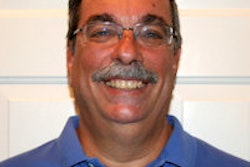With a growing movement toward providing 24/7 subspecialized radiology reading services, it's important to optimize staffing levels. Not having enough subspecialized staff available increases turnaround time and decreases quality; having too many for the amount of work leads to inefficiency, presenter Dr. Lily Zou said.
As a result, the research group evaluated ways to optimize and match the radiology staff to the workload across five hospitals. After analyzing and sorting HL7 messages from nearly 286,000 diagnostic radiology studies over six months, the team found it was definitely possible to provide high-quality 24/7 subspecialized reads, Zou said.
"First you have to assess the workload by time and type of study and assess how many studies a radiologist can read by subspecialty," Zou told AuntMinnie.com. "Then by aggregating the workload across multiple sites, it reduces the amount of workload variability one site can experience. This way you can maximize efficiency and still provide high-quality reads 24/7."



















